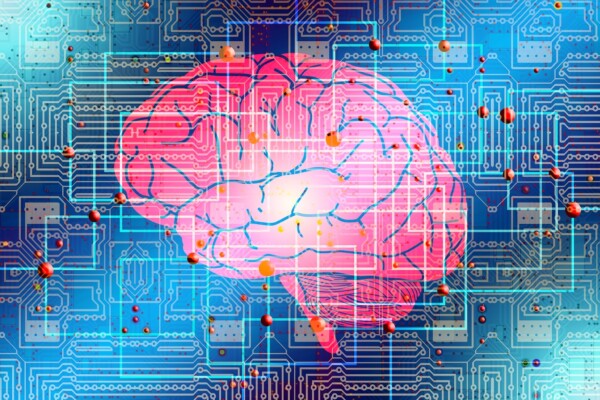 Even in systems outside of SAP, automation techniques – often involving AI – play a large role in landscape simplification now and in the future. They allow for speedy processing that also ensures accuracy, all while freeing up the team to focus on more thought-centric tasks.
Even in systems outside of SAP, automation techniques – often involving AI – play a large role in landscape simplification now and in the future. They allow for speedy processing that also ensures accuracy, all while freeing up the team to focus on more thought-centric tasks.
To ensure continued agility, businesses need to keep up-to-date with the current strategies to automating the SAP landscape simplification process. At the same time, they need to keep in tune with their own business needs to determine what solutions and approaches work best for them.
With these concepts in mind, this article describes some of the current and upcoming ways that automation is transforming SAP landscapes.
Robotic Processing Automation
Some aspects of landscape simplification, such as analyzing areas for business value and considering the best way to consolidate those areas with that information, cannot be automated. Rather, they require judgment calls and sound advice.
Because of this, the best area to consider automation in SAP is any mechanical and/or repetitive function (for example, accounting and transaction management—and interface connection for landscape simplification).
Robotic Process Automation, or RPA, is an automation option that is designed for this purpose.1 In SAP, RPA can automate tasks across departments. To do so, the system uses software and artificial intelligence that align to a script for high-volume transactions, such as retrieving mass data, transferring files, and performing other repetitive back-office activities. The automation frees up time spent on repetitive tasks and decreases the chances of error.
Two Methods: Clean Core and AI-First
As SAP has continued to explore the possibilities in automation, the company has come up with two additional approaches: Clean Core and AI-First.2
Clean Core is ultimately designed to streamline processes—a crucial part of landscape simplification. To do so, the method maintains a clean SAP standard, i.e. Core, that only has standard coding. Any exceptions need to have some sort of proven business advantage, and they must be separate from the core.
Using this method, you can reduce technical debt and improve workflows for a truly agile business. Additionally, any updates or changes are simpler, as you can more easily work around any custom coding. Clean Core creates a foundation for innovation, empowering organizations to navigate the complexities of the modern business landscape.
Moving on to AI-First Delivery, the approach prioritizes incorporating artificial intelligence. Some examples of AI the system uses include machine learning, predictive analytics, and natural language processing. With this AI, you can automate aspects of landscape simplification while resting assured that the simplification prioritizes business agility.
Together, Clean Core and AI-First bring the perfect collaboration to achieve agility and digital transformation. Clean Core creates a simplified environment, on which AI-First provides business-driven insights to go beyond the operational side of business. As a result, the SAP ecosystem enables long-term success.
A Look into the Future
With the turn of the new year, let’s take a look at some new automation strategies and consider how we can apply them to the future.
As noted in a previous article, one of the major trends in SAP that will likely grow in the future and allow for improved automation/landscape simplification is the cloud. As a technique that simultaneously unifies systems, allows for easy access of data, and lowers initial investment and TCO in general, the cloud is quickly becoming a popular tool for businesses that use SAP. To ensure security while using the versatile technology, SAP uses the secure software development lifecycle, or secure SDL. Simply put, the process constantly assesses security functions for the developing software, and scans the software for potential vulnerabilities. For more information on secure SDL, feel free to take a look at the following presentation: The Secure Software Development Lifecycle at SAP.
Additionally, many businesses that use SAP will continue to see a stronger focus on accessibility throughout the landscape simplification process. As employees, team members, and business executives become increasingly mobile for work, SAP is developing software with user friendliness for smartphones and other mobile devices in mind. While this aspect will not simplify the SAP landscape in and of itself, the technology can increase business agility as it allows for easier, faster communication.
Finally, SAP has been working on a major issue that custom applications face (which often causes impedes landscape simplification): high amounts of custom coding. To do this, the software provider is finding ways to automate the migration of custom coding to new systems such as S/4HANA. The program conducts system conversion, which detects and changes/removes custom code objects that S/4HANA does not need. Additionally, the system notates why the objects were removed, and how to change the custom code in response. Along the way, the system identifies any unnecessary complexity of the ABAP code. To learn more about the process, check out SAP’s Custom Code Migration Guide: https://help.sap.com/doc/9dcbc5e47ba54a5cbb509afaa49dd5a1/2023.000/en-US/CustomCodeMigration_EndToEnd.pdf.
In the future, businesses using SAP will likely see even more improved AI and automation in general. As a result, businesses need to stay vigilant about the current and upcoming methods, so they can strategize and continue to experience top-notch landscape simplification.
1 “Top 20 Use Cases & Examples of RPA in SAP in 2024.” https://research.aimultiple.com/rpa-sap/.
2 “Breaking Boundaries: Clean Core and AI-First Strategies Transforming SAP.” https://blogs.sap.com/2023/12/27/breaking-boundaries-clean-core-and-ai-first-strategies-transforming-sap/






Leave A Comment